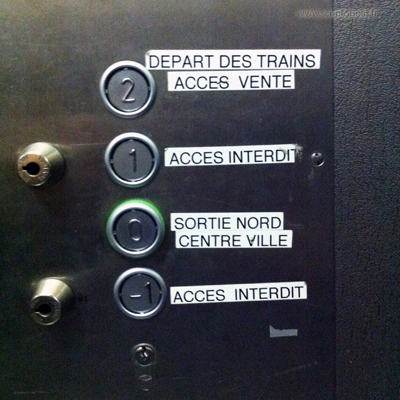Too few

Elevators are often experienced as specific sites. In such confined spaces, feelings are as various as the fear of suddenly failing down, the anxiety of getting stuck for a long time, or being visited by a ghost girl, sexual arousal as it is an appropriate place for fantasies. Movies and commercials generally invest in the narrowness of such a site to emphasize the expression of our emotions. Doing so, elevators have progressively became a well-suited closed room that perfectly exhibit human feelings in interaction. Thus, elevators as a site are sometimes knighted as an appropriate device for experimental situations.
Elevators are also specific technical assemblages dedicated to vertical movement: an iron cage suspended with a system of cables powered by electric motors that balance the cage by a counterweight, related to a control station with call buttons. The experience of transportation does not consist in going through one space to reach another place, nor in contemplating a landscape, as it may be the case when traveling by car or by train. Rather, as a urban technology firmly attached to the rise of buildings, it enables us to travel from one floor to another.
By pressing each button, one is supposed to be transported to a different space. For instance, in hotel lifts, call button text and icons are raised to access the reception, different floors and rooms, the restaurant, or the swimming pool… In some elevators, certain floors are inaccessible unless one turns a key, swipes a security card, or enters a passcode. But here, much of the choices are of this kind: two options out of four read “forbidden access”. Facing such a control station, feelings and technologies become one. In a world where the rise of open access is tantamount to democracy, it becomes unsustainable to be restricted to a boolean situation (“trains departure” or “downtown”), while knowing more options are available.







;A lire sur ce sujet : http://www.babelio.com/livres/Dubois-Le-cas-Sneijder/301115